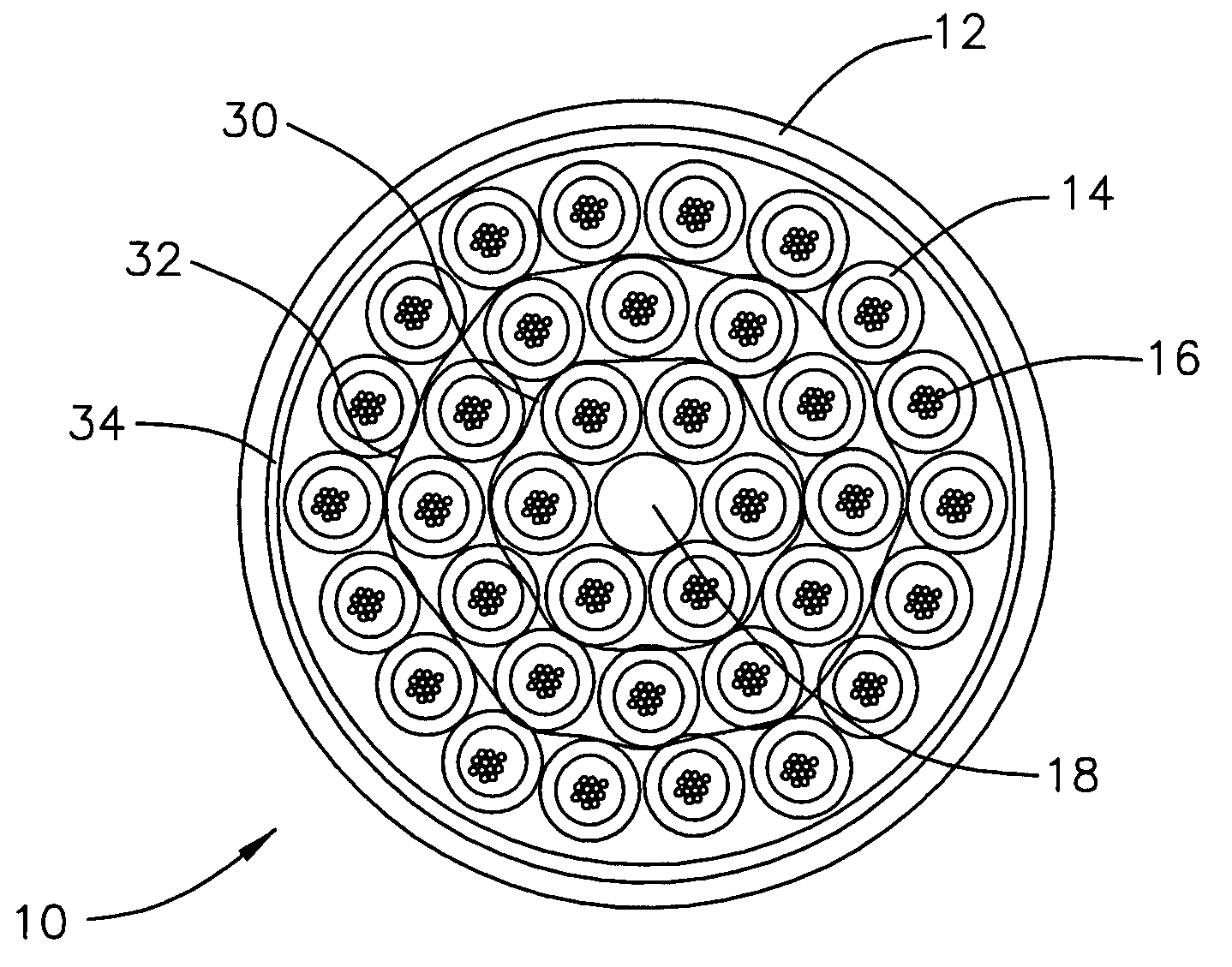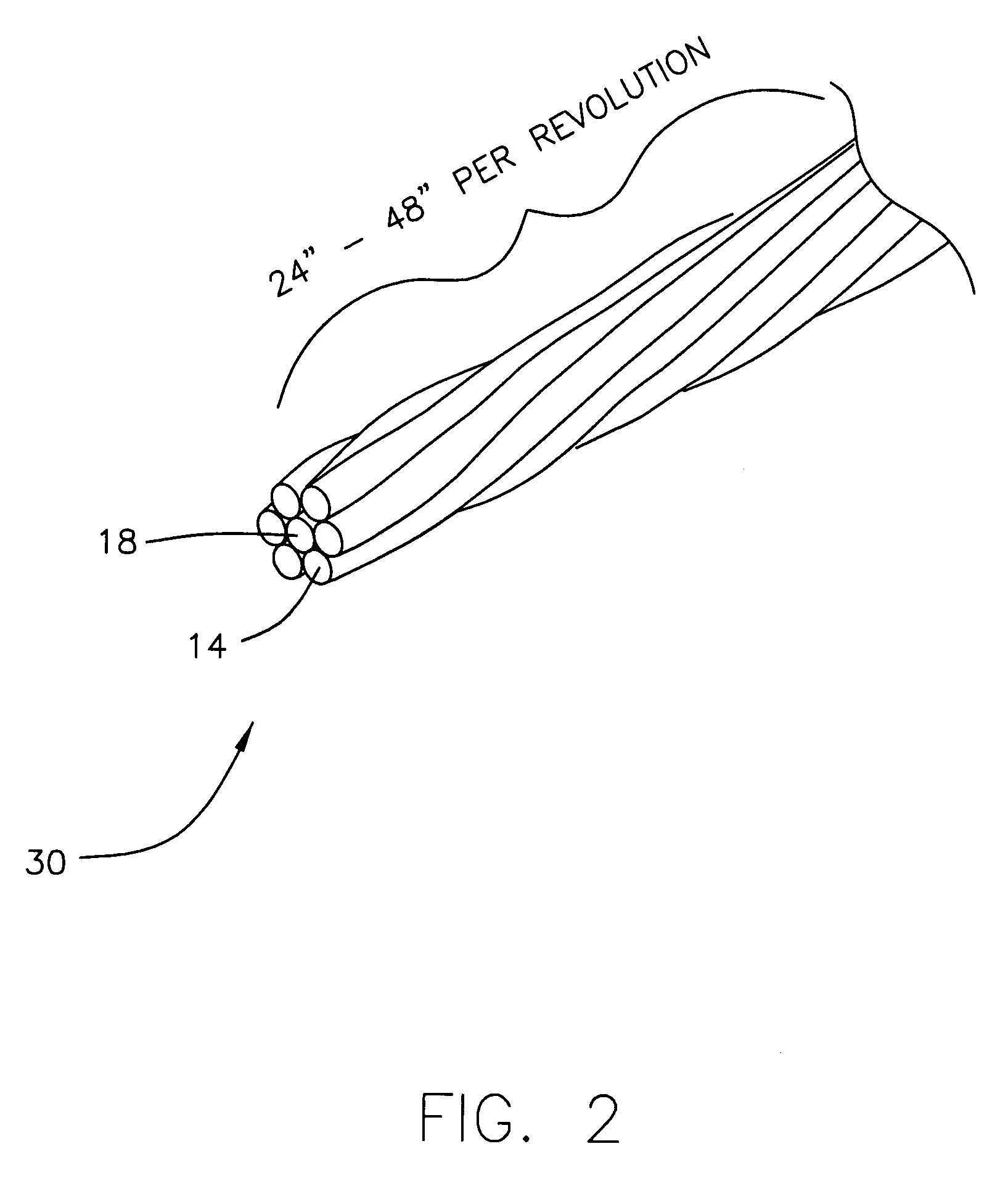Optical fiber cable with system and method for mid-span access
a technology of optical fiber cable and mid-span access, applied in the direction of optics, fibre mechanical structure, instruments, etc., can solve the problems of inaccessible lower (inner) layers of loose tube cable, difficulty in mid-span access, and maintain significant drawbacks of current arrangement of such cables, etc., to achieve stable and robust stranding and high fiber count
- Summary
- Abstract
- Description
- Claims
- Application Information
AI Technical Summary
Benefits of technology
Problems solved by technology
Method used
Image
Examples
Embodiment Construction
[0018]In one embodiment of the present invention, as illustrated in FIG. 1, a high fiber count optical fiber cable 10 is shown, having an outer jacket 12 and a number of loose tubes 14, each of which having a number of optical fibers 16 therein. A central strength member 18 is disposed centrally for added pulling and bending strength to cable 10.
[0019]Outer jacket 12 and loose tubes 14 are typically extruded polymers made from PVC compounds that exhibit Riser and Plenum rated fire resistance. A more detailed discussion of the composition of the polymers follows below. Optical fibers 16 may either be typical UV coated optical fibers (having a 250 micron diameter) or may be tight buffer (polymer coated) optical fibers (having a 900 micron diameter). For the purpose of illustration fibers 16 are discussed below as basic UV coated optical fibers 16.
[0020]Regarding the construction of loose tubes 14, each tube 14 is preferably an extruded polymer encasing twelve UV coated optical fibers ...
PUM
 Login to View More
Login to View More Abstract
Description
Claims
Application Information
 Login to View More
Login to View More - R&D
- Intellectual Property
- Life Sciences
- Materials
- Tech Scout
- Unparalleled Data Quality
- Higher Quality Content
- 60% Fewer Hallucinations
Browse by: Latest US Patents, China's latest patents, Technical Efficacy Thesaurus, Application Domain, Technology Topic, Popular Technical Reports.
© 2025 PatSnap. All rights reserved.Legal|Privacy policy|Modern Slavery Act Transparency Statement|Sitemap|About US| Contact US: help@patsnap.com



